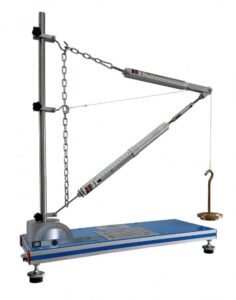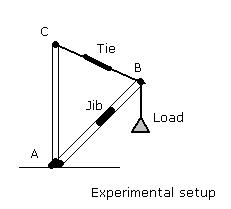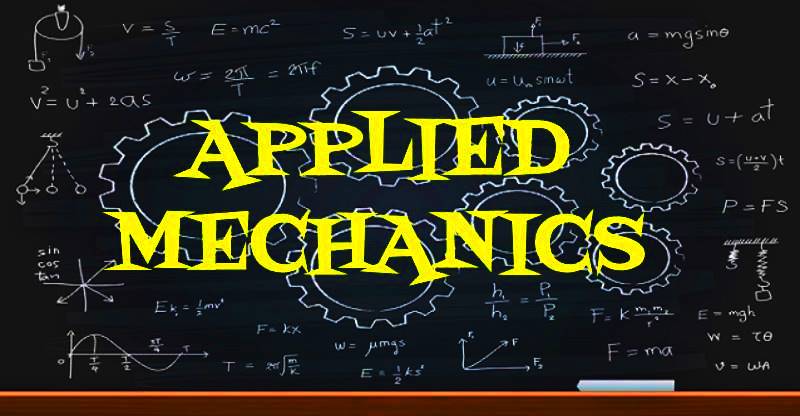EXPERIMENT
OBJECTIVE:
To Verify Lami’s theorem by finding the forces in the different members of a Jib-crane.
APPARATUS REQUIRED:
Jib Apparatus, Weight, Meter Rod, Set Square, Pencil etc.
THEORY:

Lami’s Theorem states that If three coplanar concurrent forces are acting on a body and keeps the body in Equilibrium, then each force is proportional to the sine of the angle between the other two forces.

PROCEDURE:
- Take the initial reading of forces in the compression spring balance of rod and tension spring balance of the tie rod.
- Suspend a known weight ‘w’ with the help of weight hanger.
- Take final reading of force in jib rod and tie rod of spring balance.
- From the final reading subtract the initial reading to get observed value of the forces in rod and tie rod.
- Measure the length of jib rod from the point on the platform, the position where string is attached, length of the tie rod and vertical height of the post.
- From the above measurement, draw the space diagram to a suitable scale and name the member by bow’s notation.
- Measure the internal angles contained between the two forces in vector diagram.
- Measure angle α, β and γ and apply Lami’s theorem to find out the forces in the member e.g.
[frac up=”W” down=”sin α”] = [frac up=”P” down=”sin β”] = [frac up=”R” down=”sin γ”]
- Equating 1st and 2nd, we get,
[frac up=”W” down=”sin α”] = [frac up=”P” down=”sin β”] or P = [frac up=”(W . sin β )” down=”sin α”]
- Similarly, equating 2nd and 3rd, we get,
[frac up=”P” down=”sin β”] = [frac up=”R” down=”sin γ”] or R = [frac up=”(P . sin γ)” down=”sin β”]
- Compare the calculated values of forces with observed values and determine the percentage error.
- Repeat the experiment either by changing the load or by varying the length of the vertical post.
OBSERVATION TABLE:
| S. No. | Weight on post (W in kg) | Length of members of jib crane (in cm) | Initial Reading (I) (in kg) | Final Reading (F) (in kg) | Observed Value (F-I) (in kg) | Calculated Force (in kg) | Percentage Error of Force (in percentage) |
|||||||
| JIB | TIE | POST | JIB | TIE | JIB | TIE | JIB | TIE | JIB | TIE | JIB [frac up=”(P1 – P)” down=”P1″] x 100 |
TIE [frac up=”(R1 – R)” down=”R1″] x 100 |
||
PRECAUTIONS:
- Initial reading of the spring balance of tie rod and jib rod should be taken carefully.
- Weight should be suspended gently without any jerk.
- Measure the length of each member of jib crane with an extensible string.
- The spring balance should be sensitive to give correct reading.
- The space and force diagram should be drawn correctly.
RELATED VIDEOS:
